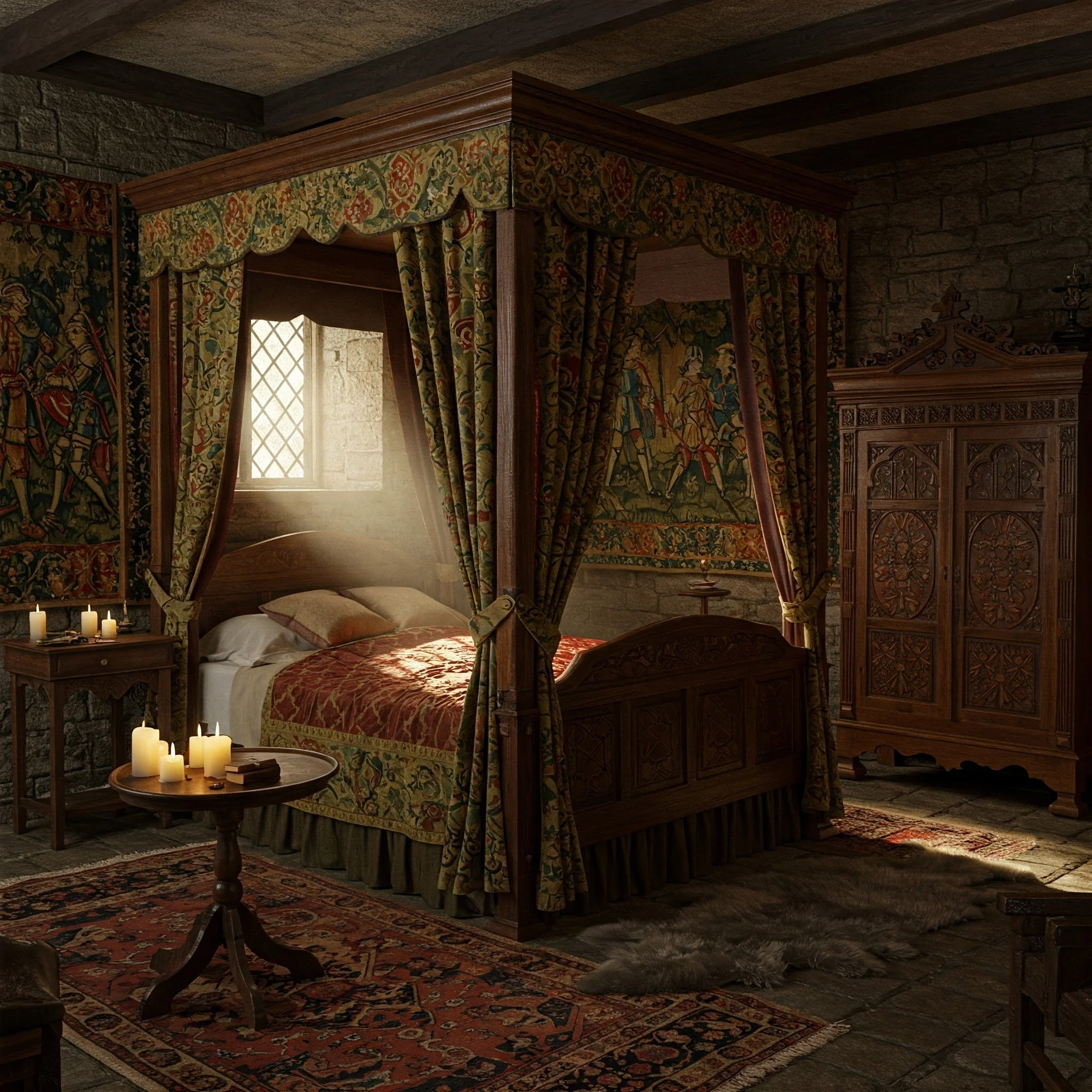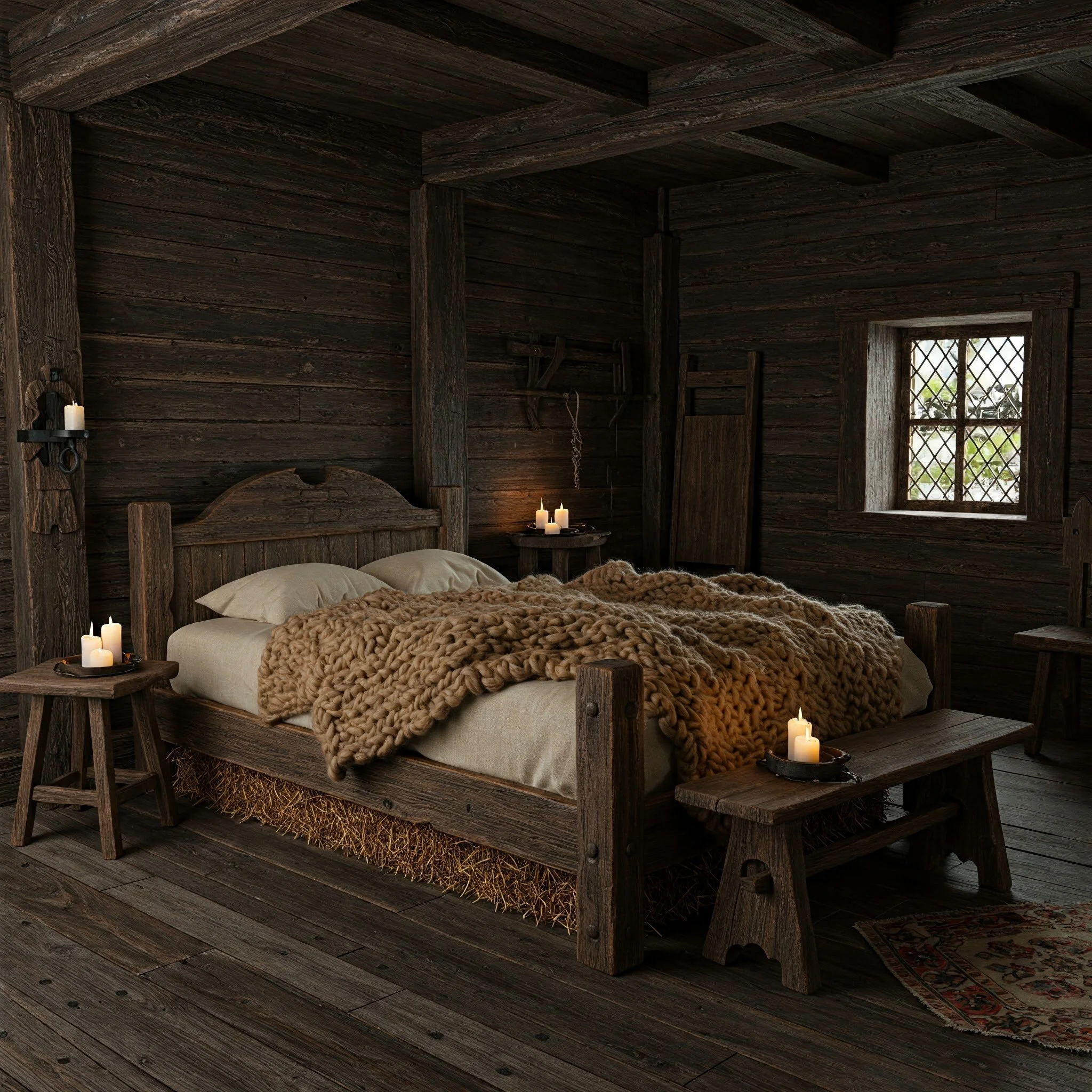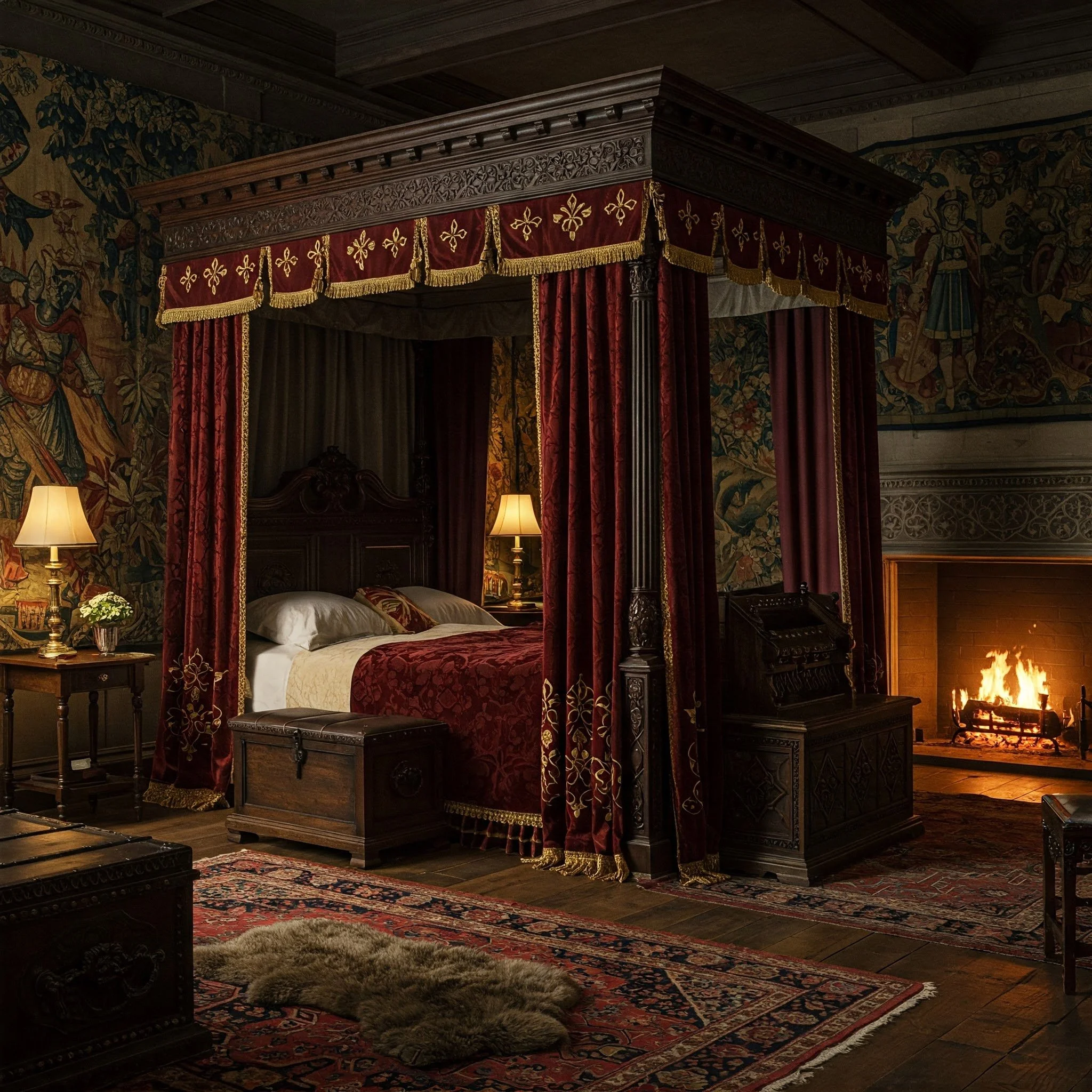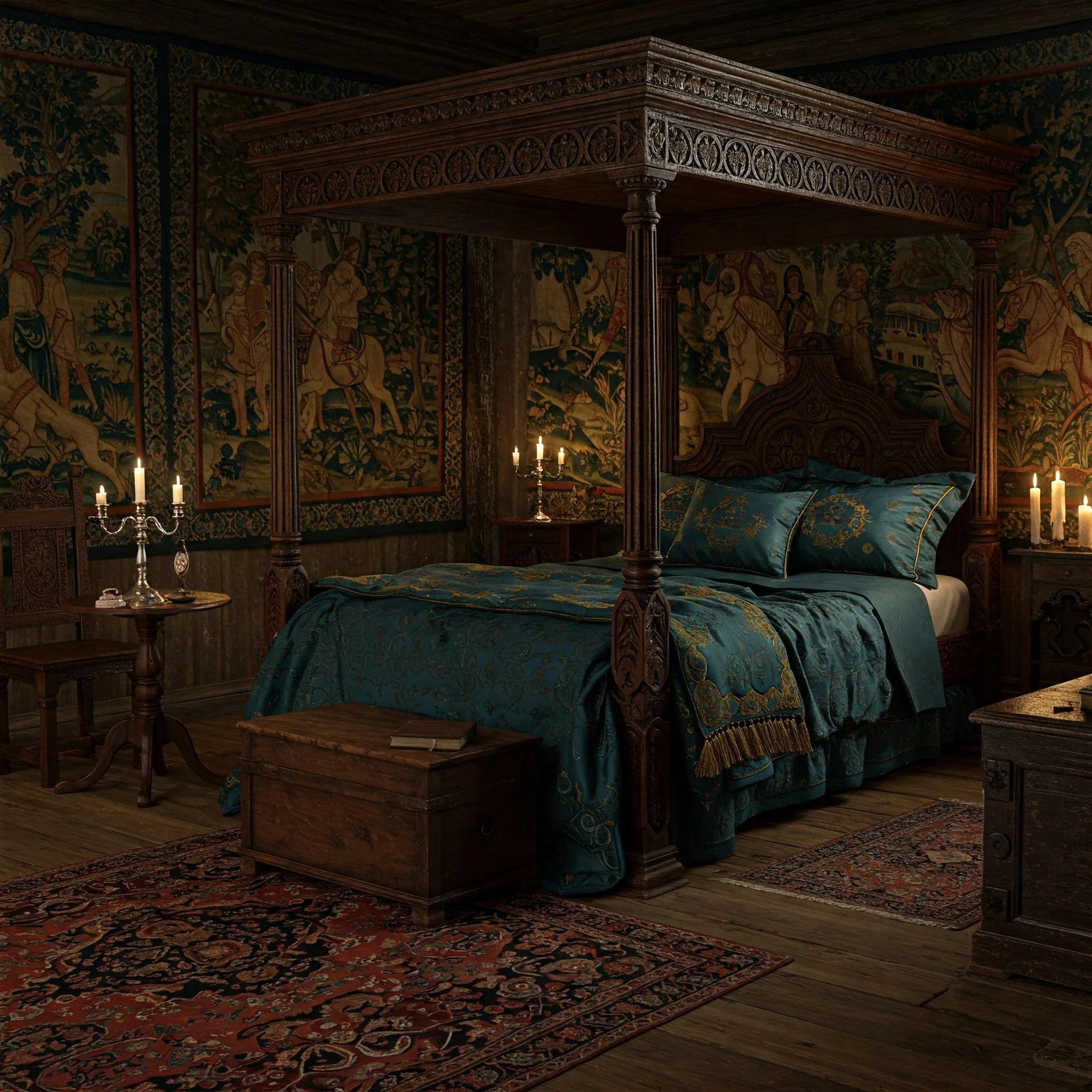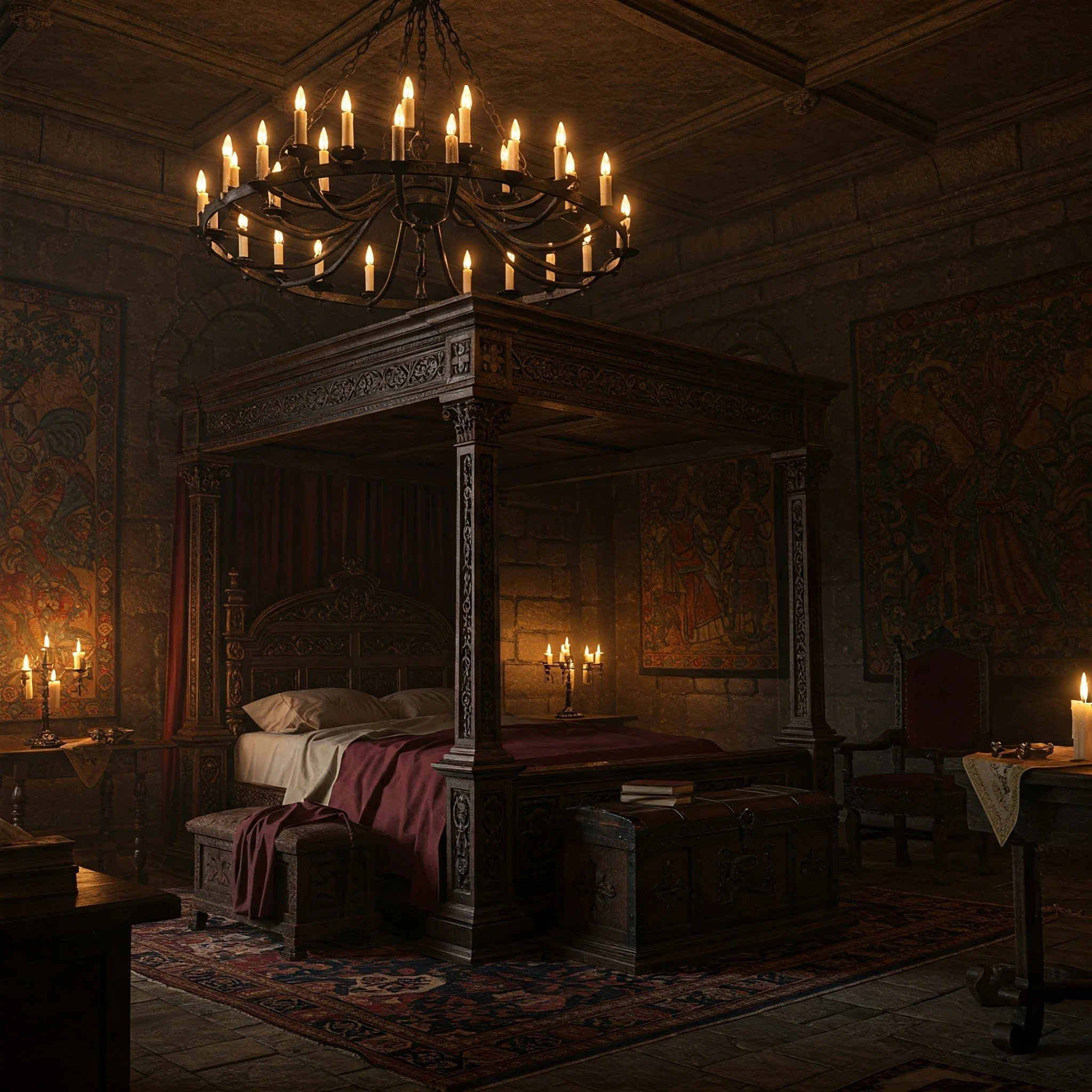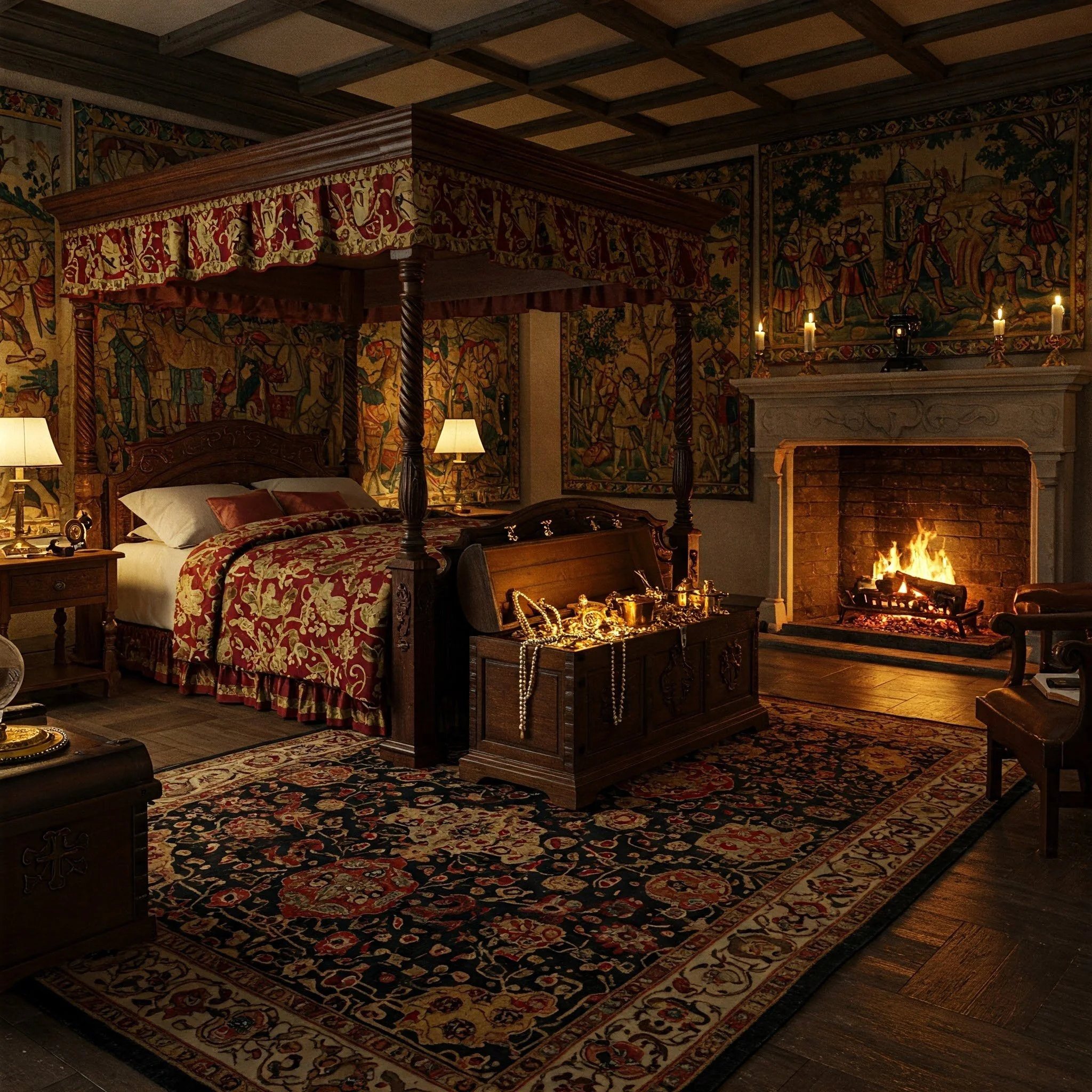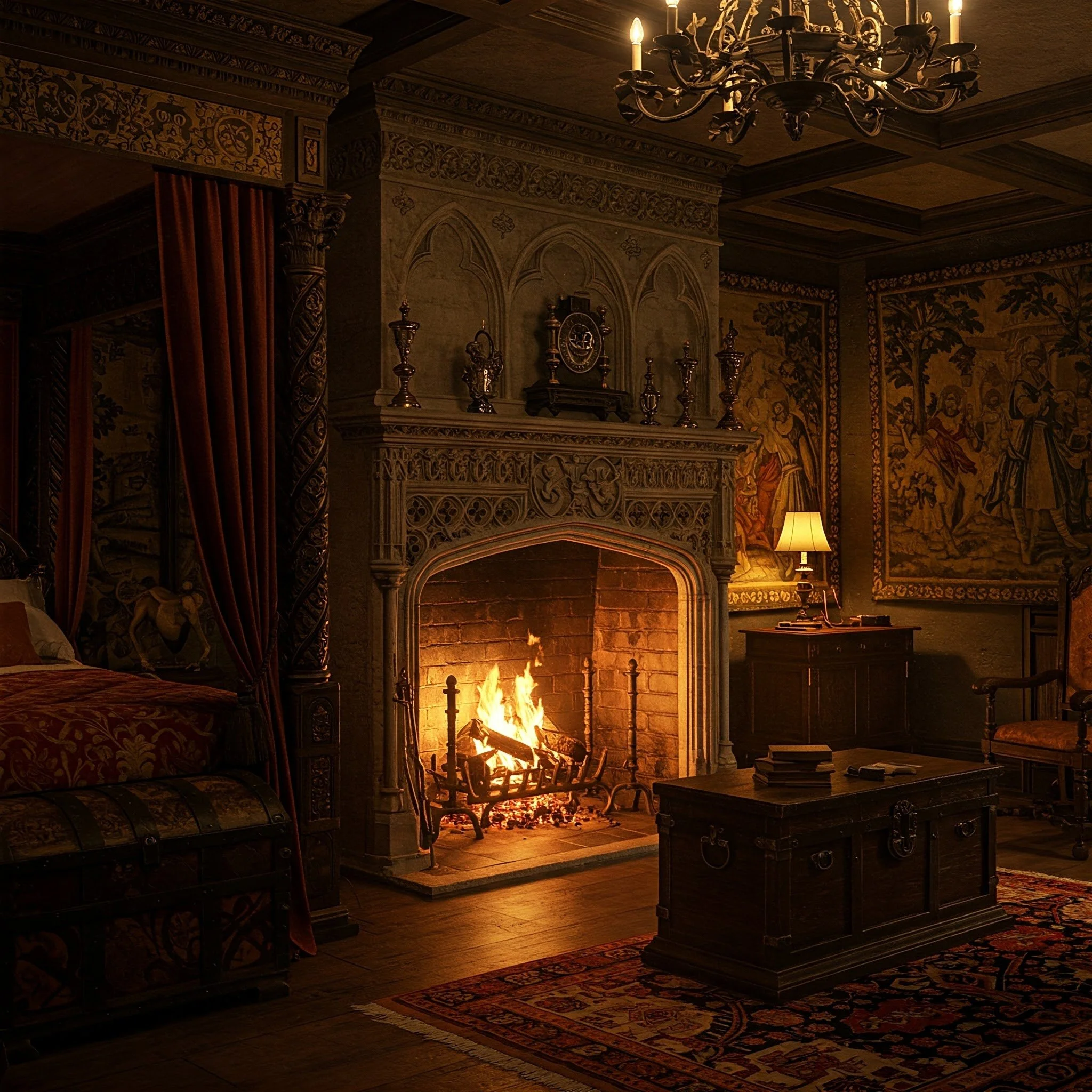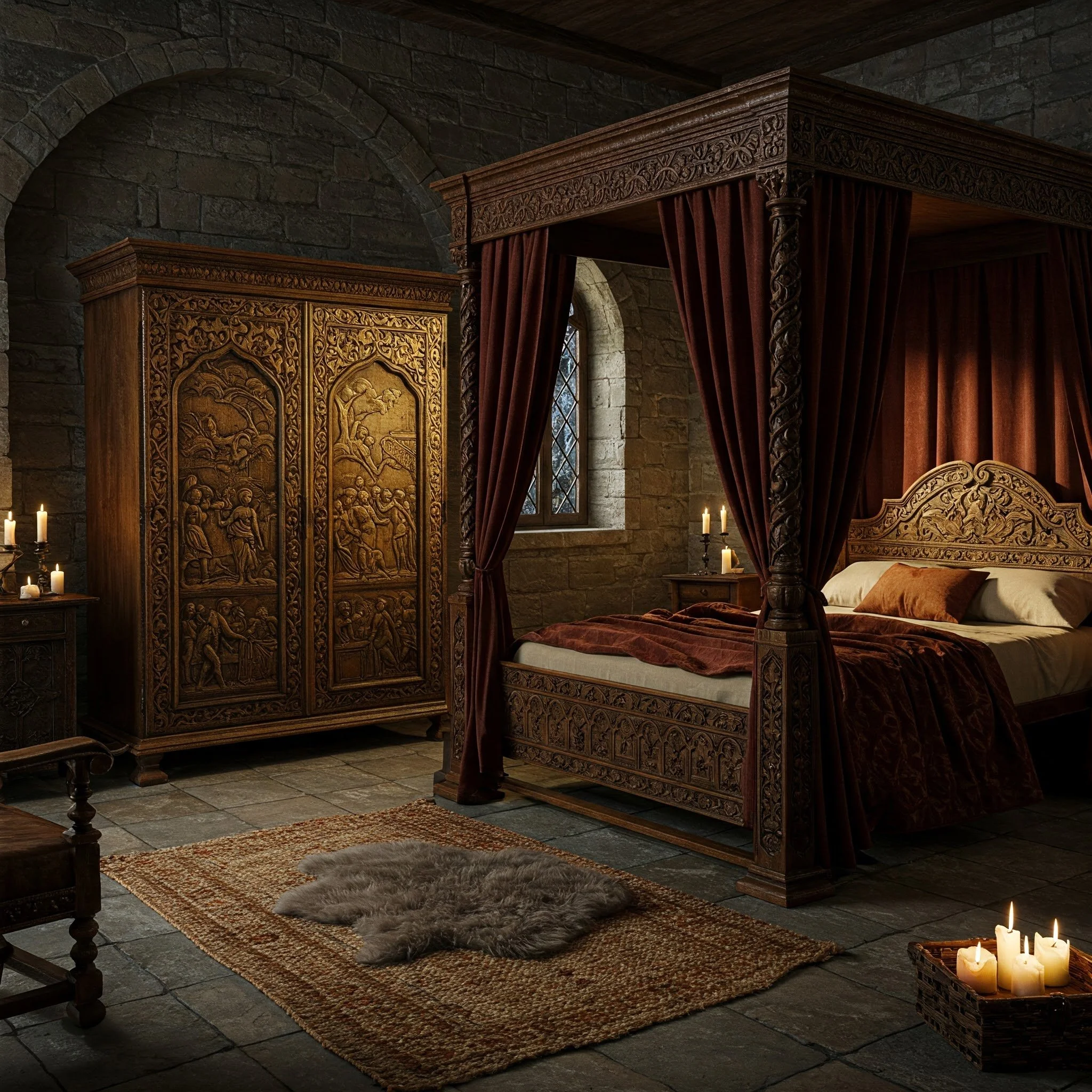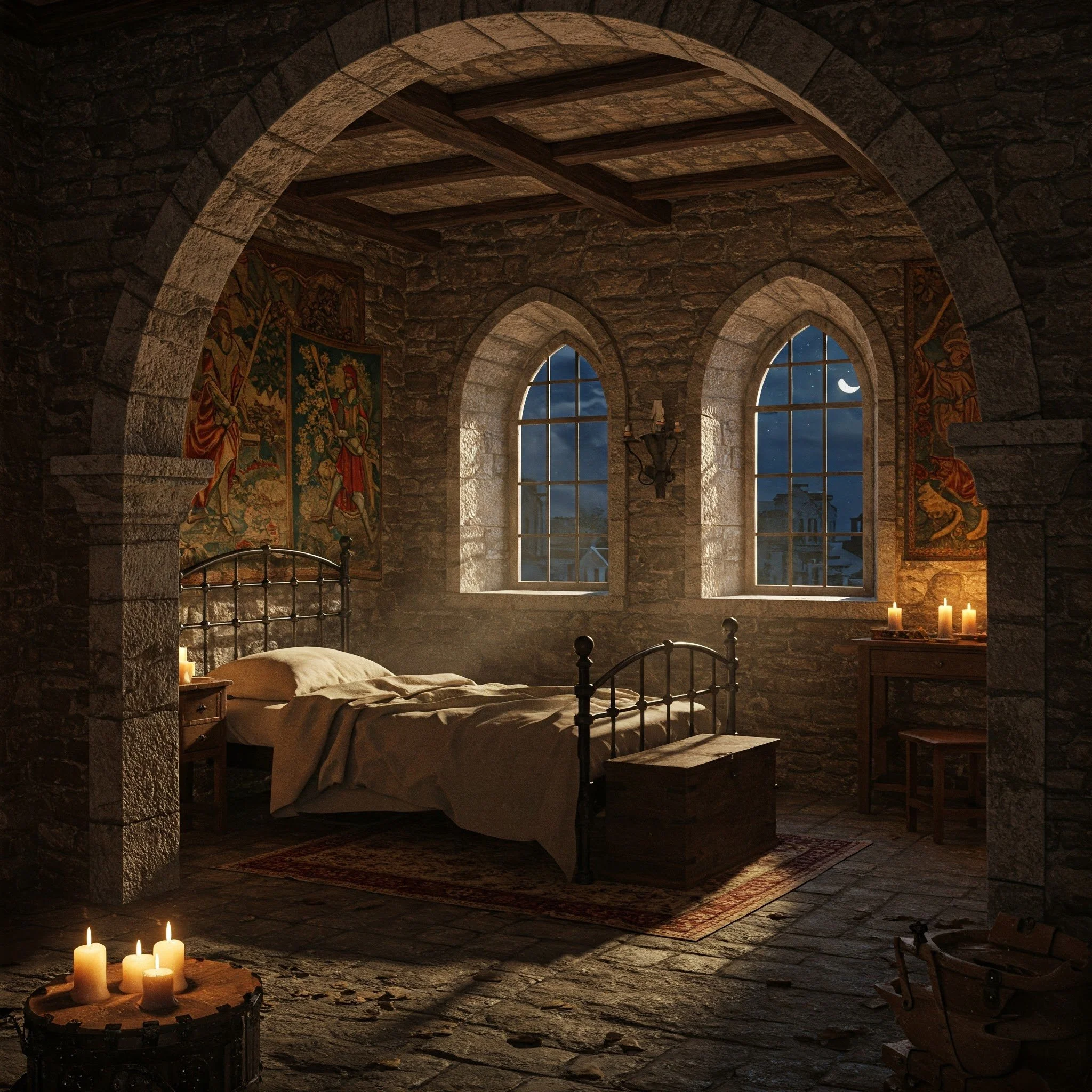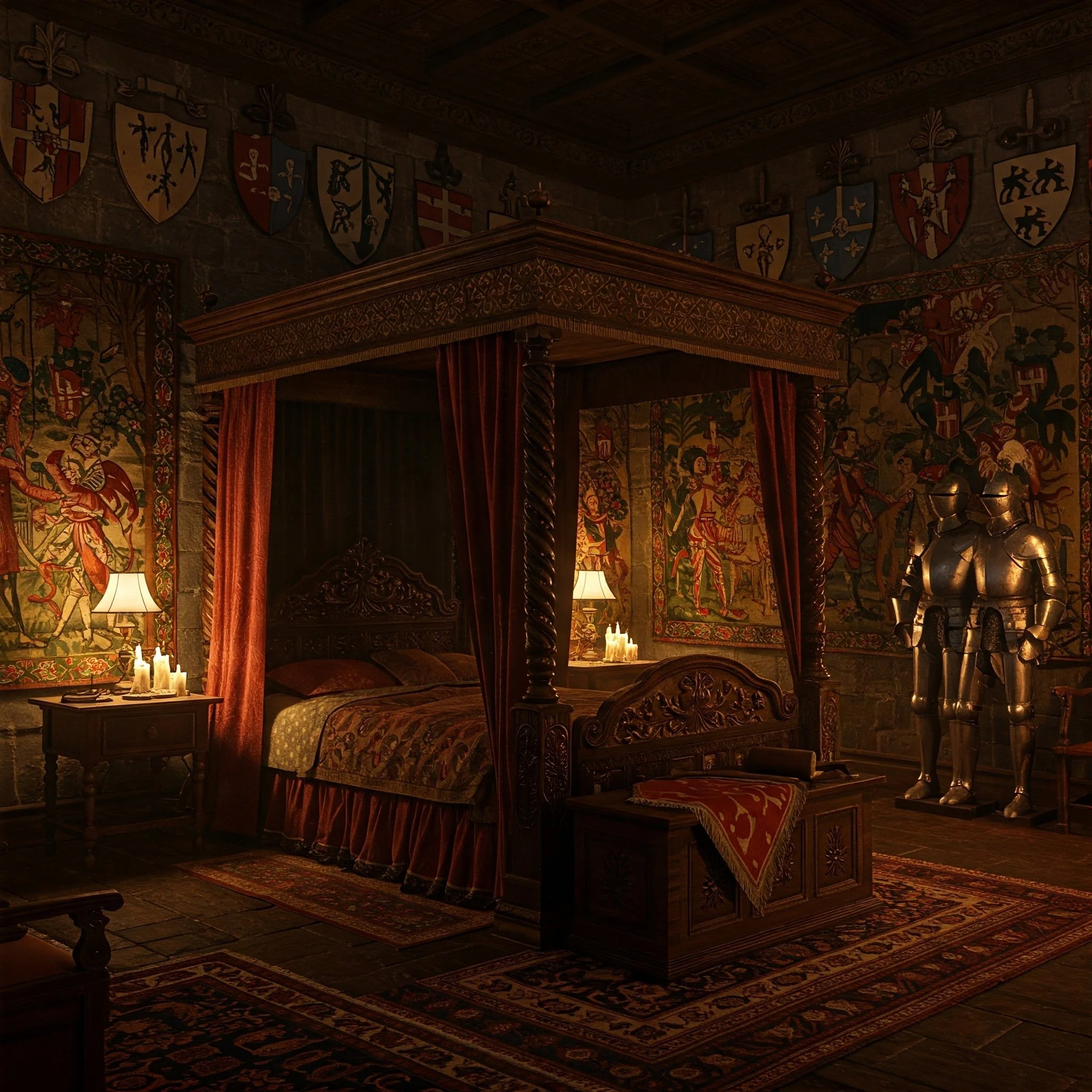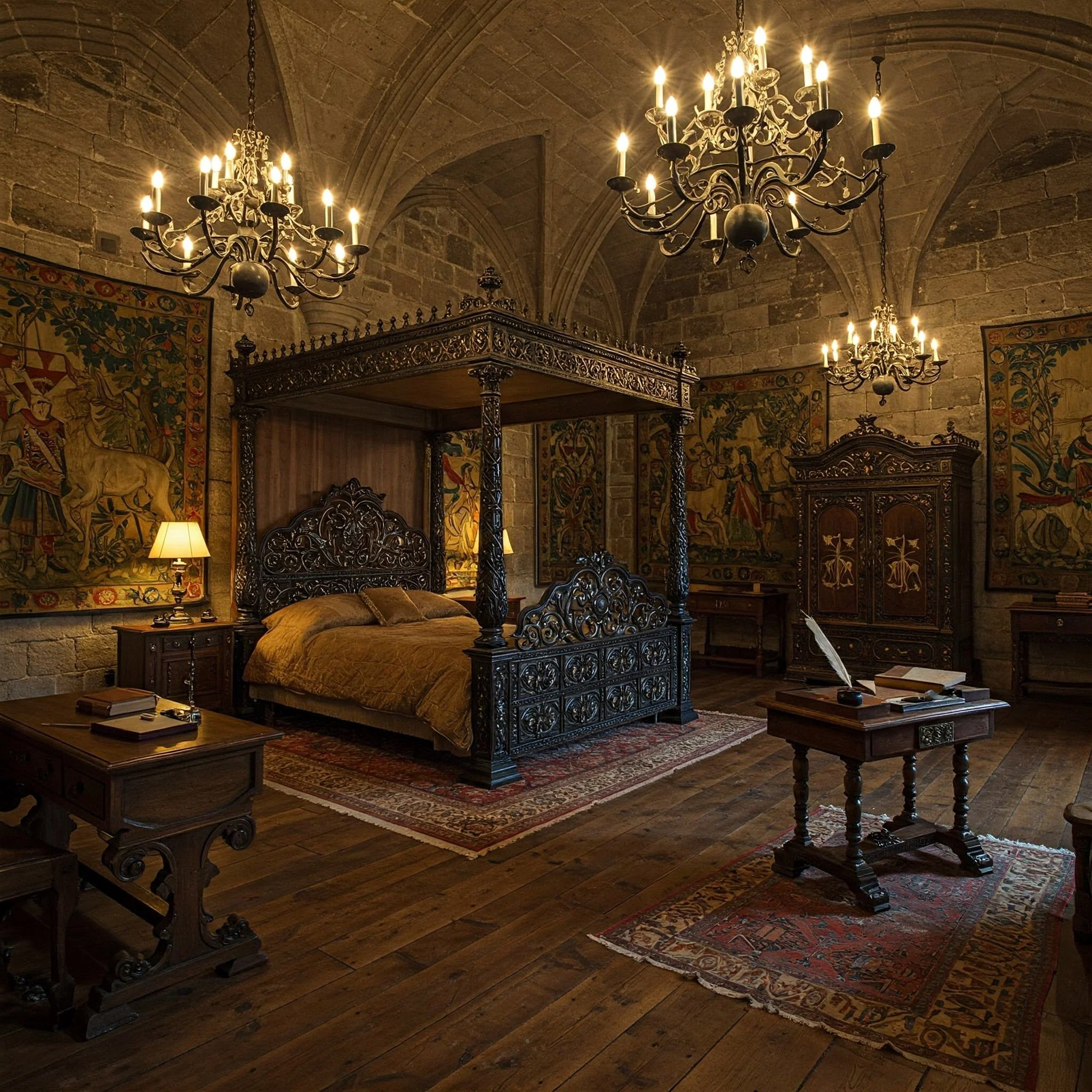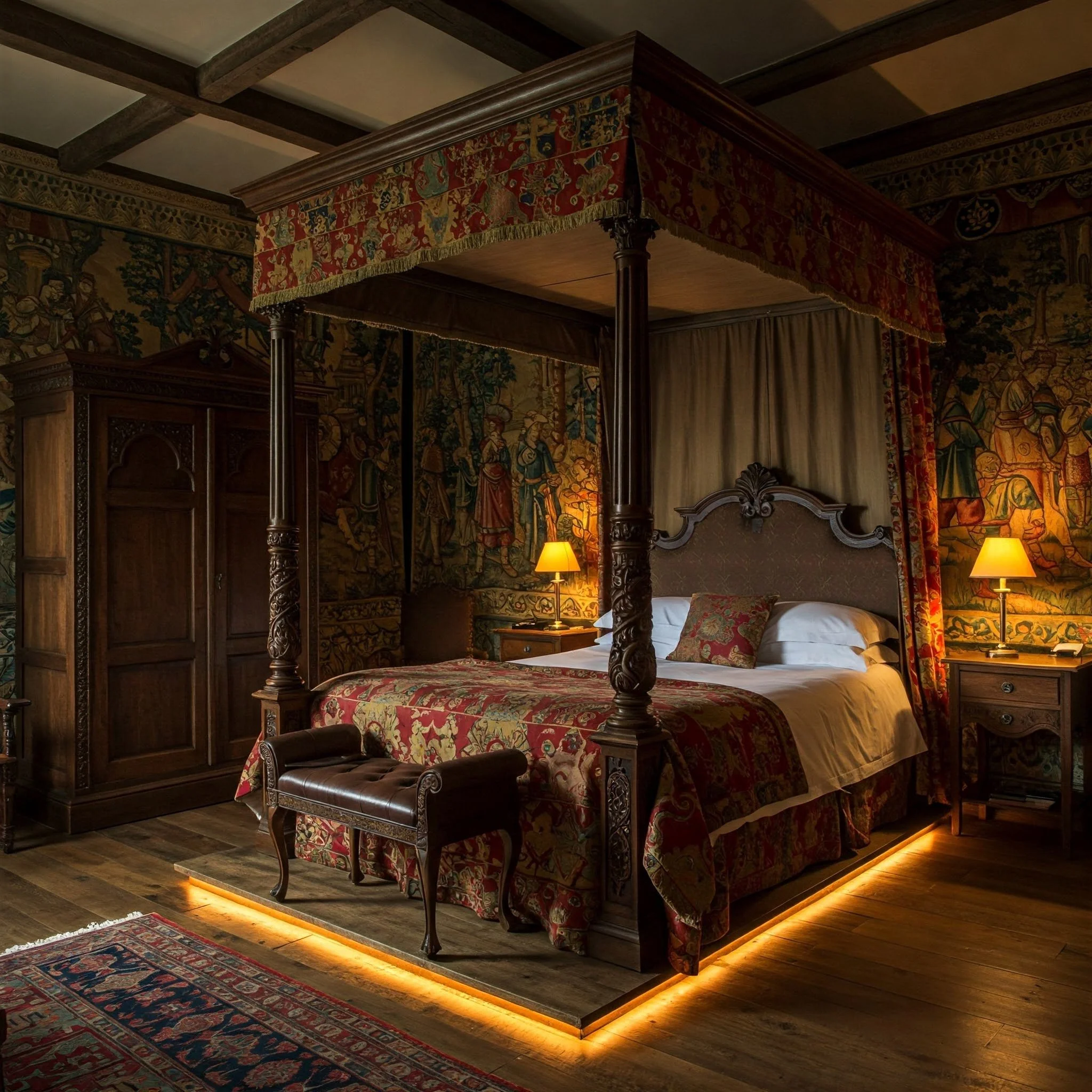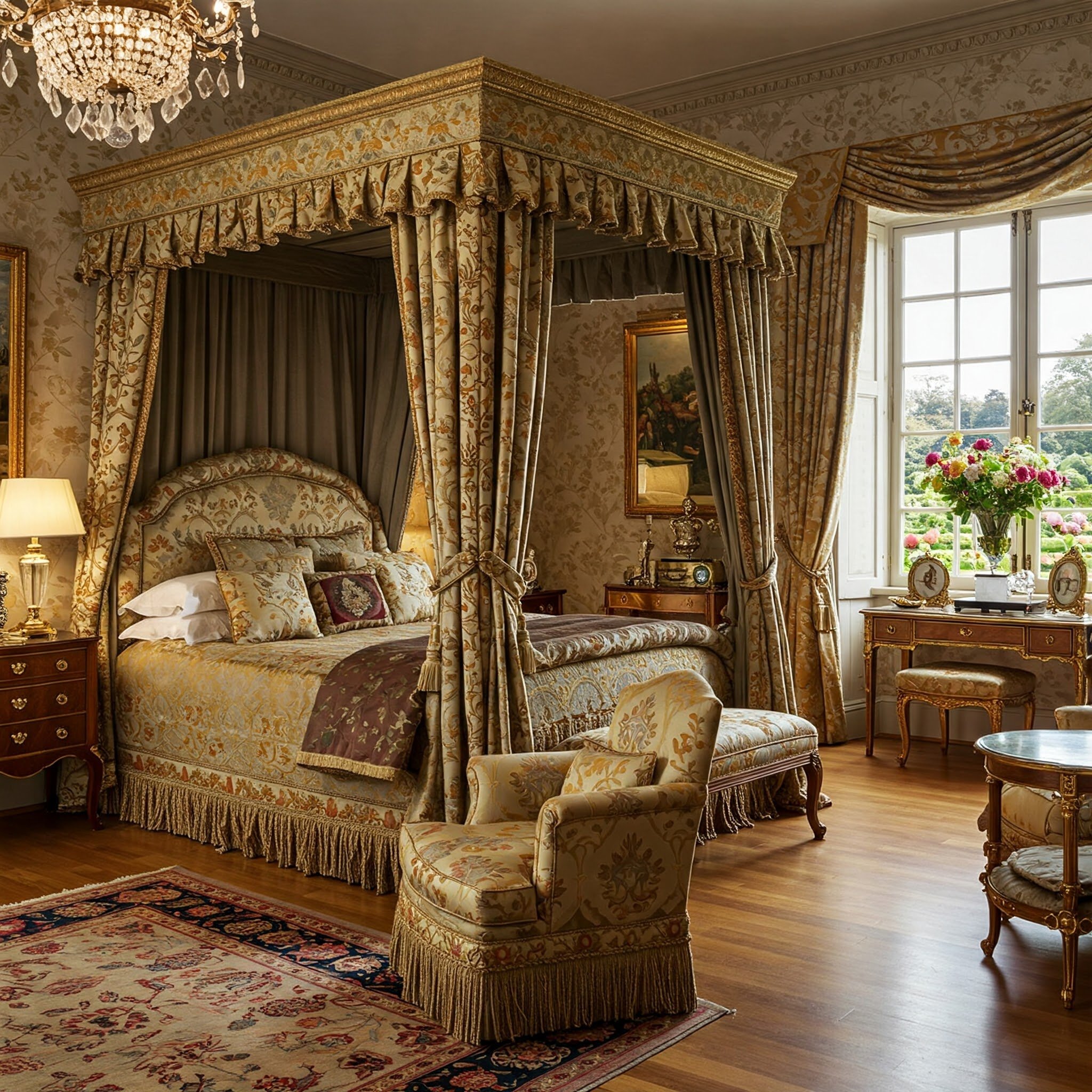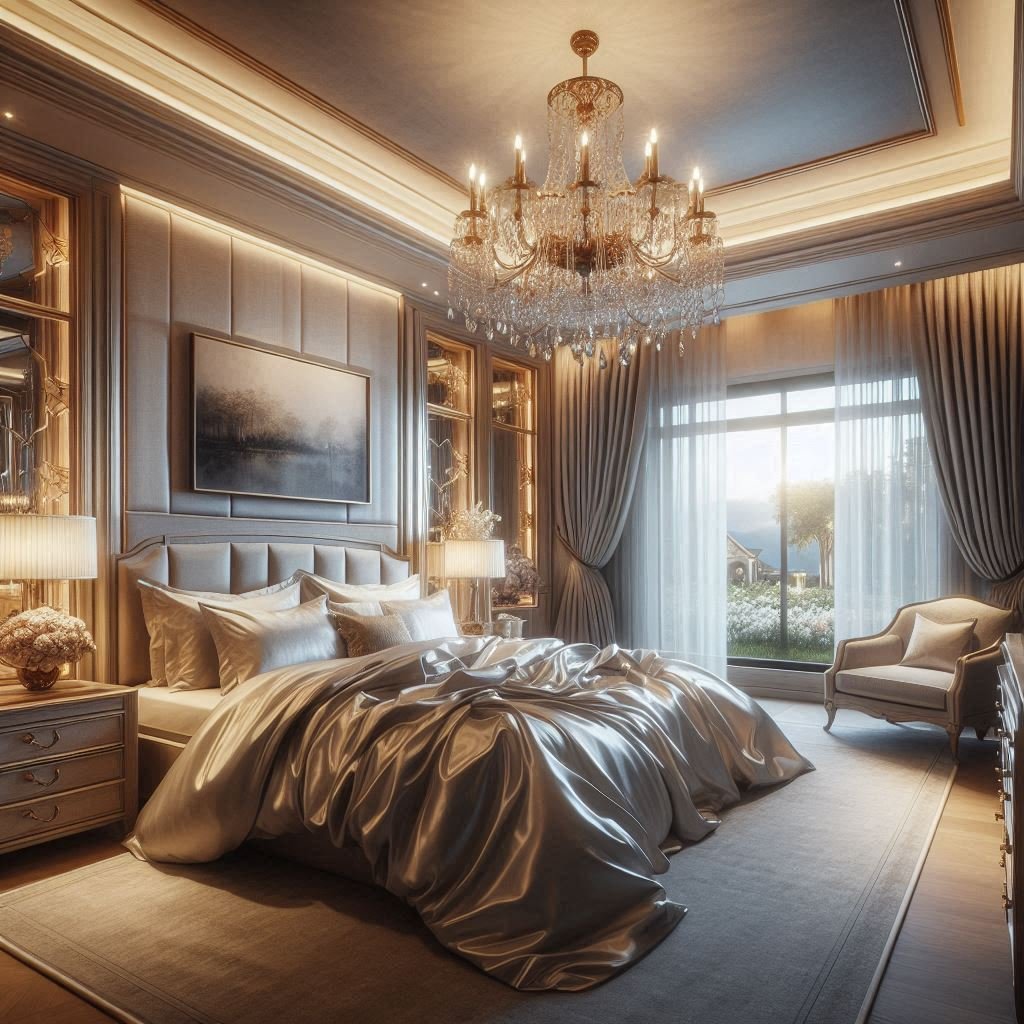15 Medieval Bedroom Ideas for Timeless Charm
Immerse yourself in the beauty of a bygone era with these 15 medieval bedroom ideas. Discover décor tips, rustic finishes, and unique accents that capture timeless charm.
Have you ever found yourself wishing you could time-travel to an era of grand castles, flickering torchlight, and regal banquets? While we may not have a functioning time machine (yet!), transforming your bedroom into a medieval-inspired haven is the next best thing. Think wrought-iron chandeliers casting warm glows on stone-like walls, plush textiles draping from a robust canopy bed, and wooden beams overhead that whisper centuries-old tales. It’s all about capturing the rugged yet romantic essence of the Middle Ages—where form met function in the most enchanting ways. If you’re ready to blend old-world opulence with modern comforts, you’re in the right place. Let’s explore 15 creative ideas to turn your bedroom into a space that celebrates the timeless charm of medieval aesthetics.
1. Embracing Rustic Wood Elements
If you’ve ever stepped inside a medieval castle, you likely recall the dominant presence of rich, sturdy wood. From ceiling beams that hint at centuries of craftsmanship to thick wooden doors that conjure images of hidden chambers, wood played a pivotal role in medieval design. To bring this rustic charm into your bedroom, focus on key elements such as a wooden bed frame with ornate carvings or exposed beams overhead. Choose reclaimed or distressed wood for a more authentic, weathered appearance—this adds character while also being eco-friendly. You can even incorporate wooden wall panels or accent pieces like antique dressers to complete the theme. Think of this approach as the soul of medieval décor: it’s not about perfection but rather celebrating the natural grains, knots, and textures that tell a storied past.
2. Grand Canopy Beds
Few things say “medieval splendor” quite like a grand canopy bed. It’s where knights might have laid their weary heads after a day of jousting or a queen might have penned her nightly letters. Recreate this royal vibe in your own space with a four-poster frame adorned with lush fabrics. Velvet and brocade drapes exude a sense of luxury, while linen or cotton can offer a lighter, breezier feel. Don’t be shy about adding trim, tassels, or braids for extra flair. Opt for dark-stained wood to capture the shadowy, moody element of medieval times, or choose a wrought-iron frame if you’d prefer a slightly Gothic twist. This centerpiece isn’t just a place to sleep—it’s your personal stage for an immersive journey into a realm of archaic elegance every time you enter.
3. Distressed Stone or Stone-Like Walls
Imagine the sturdy walls of a fortress—thick, unyielding, and steeped in history. While most modern homes don’t have actual stone foundations, you can emulate that texture with stone veneer panels or cleverly applied faux-finish paint. If you’re going for authenticity, opt for neutral or grayish hues that resemble natural rock. These walls provide a dramatic backdrop, instantly transporting you to a realm of castle corridors and torch-lit great halls. For a softer approach, add tapestries, paintings, or even sconces to break up the solidity of the stone effect. The key is balance: too much stone can overwhelm, so consider pairing it with plush rugs or rich wooden furniture to keep the room warm and inviting. Ultimately, distressed stone walls ground the space, lending an air of permanence and age-old grandeur.
4. Ornate Metalwork and Hardware
Medieval design was all about attention to detail, especially in metalwork and hardware. Think heavy iron door knockers, wrought-iron brackets, and intricately designed hinges that reflect a craftsman’s expert touch. Infuse your bedroom with this spirit by choosing decorative metal pieces—like ornate bed frames, curtain rods, or even dresser handles. You might also consider adding a metal accent trunk at the foot of the bed, reminiscent of treasure chests from legends of old. The rough, hammered texture of iron or bronze can act as a rugged counterpoint to softer elements like drapes and bedding. Make sure these metal accents highlight the other medieval-inspired features, creating a cohesive vibe that calls to mind a hidden fortress door or a secret chest brimming with untold tales of valor and intrigue.
5. Tapestries and Rich Textiles
One can’t think of medieval décor without envisioning ornate tapestries depicting mythical creatures or royal crests. These wall hangings served not only as art but also as insulation against chilly stone walls. For your bedroom, you can hang a tapestry above the bed or along a focal wall to instantly shift the mood from modern to medieval. Look for deep-toned pieces featuring dramatic scenes—maybe a hunting tableau or a floral motif that nods to the era. If large tapestries aren’t your thing, opt for smaller embroidered pieces or plush throw blankets with medieval-inspired patterns. These lavish textiles not only add visual interest but also exude cozy warmth. It’s like wrapping your room in a fabric-based storybook, inviting you to curl up and let your imagination roam free in times long past.
6. Dramatic Lighting Choices
Lighting sets the tone for any space, but it’s especially crucial in achieving that elusive medieval ambiance. Picture iron chandeliers with glowing candles (or flickering LED counterparts if you prefer modern safety) casting dancing shadows across stone-like walls. Wall sconces shaped like torches can further heighten that fortress feel. If you want a softer approach, choose amber-colored bulbs or lantern-style lamps. Layer your lighting to create a moody glow—overhead fixtures for general illumination, bedside lamps for reading, and accent lights to highlight tapestries or architectural details. The right lighting not only transports you to a candlelit hall but also ensures practicality in your daily routine. In essence, dramatic lighting transforms an ordinary bedroom into a cozy medieval chamber, rich in mystery and warm, flickering light.
7. Medieval Color Palettes
Choosing the right color scheme is like selecting the perfect outfit for a grand medieval ball—it sets the stage for everything else. Lean into rich, earthy tones such as deep burgundy, forest green, and dark navy for that authentic castle vibe. Alternatively, you could go for muted golds and browns to give a softer, Old-World palette. Splashes of royal purple or crimson can inject a regal flair, but be cautious not to overdo it. Think of it like seasoning a stew—too many bold colors, and you lose the essence of medieval charm. Instead, let these hues highlight key features, such as drapery, bedding, or accent pieces. The result? A balanced, moody atmosphere that envelops you in the timeless warmth of bygone centuries, perfect for daydreaming about life in the court.
8. Fireplace Focal Points
Nothing says “welcome to my medieval abode” quite like a crackling fireplace. In the era of knights and nobles, a fire was more than just a heat source—it was the heart of the home, a gathering spot and a symbol of hospitality. Modern spaces might not allow for a grand stone fireplace, but even a smaller hearth or a faux fireplace can capture that intimate glow. Surround it with carved mantels or decorative columns to infuse some old-world flair. Imagine curling up with a velvet throw, the flicker of flames illuminating the room as you sip on mulled wine (or hot cocoa, no judgment here). This single design element can anchor your entire medieval bedroom, transforming it from a mere sleeping space into a storied haven of warmth and comfort.
9. Carved Furniture Accents
In medieval times, furniture wasn’t just functional—it was a statement of craftsmanship and social status. If you want to channel that vibe, seek out pieces showcasing intricate carvings or embossed details. Picture a heavy oak dresser adorned with twisting vines, or a bedside table featuring Gothic arches and stylized motifs. Even smaller flourishes—like carved bedposts or drawer fronts—can add layers of authenticity. These details don’t just hint at medieval aesthetics; they whisk you away to a realm where each piece of furniture feels handcrafted and narrative-rich. Pair these items with plush cushions or embroidered runners to keep the overall look sumptuous. The result is a harmonious blend of function and flair, where every swirl of carved wood whispers tales of ancient artistry and proud lineage.
10. Luxurious Bedding and Layering
In an age where comfort was a genuine luxury, medieval-inspired bedding can turn your room into a sumptuous retreat. Think heavy quilts, layers of furs (faux, if you prefer an animal-friendly approach), and richly patterned blankets that scream opulence. This layered look serves both style and substance: you get to snuggle up in plush textures while also capturing the aesthetic of feudal-era extravagance. Add embroidered pillows or bolster cushions for a polished finish, choosing colors that echo your main palette—deep reds, forest greens, or golden browns. The bed becomes more than a place to rest; it’s the visual heart of your bedroom, reminiscent of feasts and festivities in grand halls, only now it’s where you lounge with a good book or drift off to dreams of knights and kings.
11. Incorporating Arched Doorways and Windows
Step into a medieval fantasy by introducing arched architectural elements wherever possible. It could be as grand as installing an arched doorway or as subtle as using arched mirrors to simulate ancient window frames. These curved outlines recall the cathedrals and castles of yore, where every arch had a story to tell. If a full-scale remodeling project seems daunting, consider adding faux arch moldings or decorative frames around existing windows. This instantly imparts an old-world charm without structural upheaval. For a truly immersive feel, drape your arches in tapestries or thick curtains that evoke a sense of hidden chambers. In doing so, you’ll craft an air of intrigue and romance, as if you’re stepping through portals to a lost epoch whenever you cross these gracefully curved thresholds.
12. Shield and Crest Décor
Nothing screams medieval authenticity like heraldic symbols, shields, and family crests proudly displayed. While you might not have an ancestral coat of arms to show off, you can still harness this concept for decorative flair. Hang a large shield above the headboard for instant impact, or place smaller crests strategically around the room—maybe on a door or near a fireplace. For a subtler nod, incorporate these motifs into wall art, throw pillows, or even embroidered linens. It’s akin to branding your personal “kingdom,” giving each visitor a taste of your fictional lineage. These elements spark curiosity and conversation, making your bedroom feel like a hidden corner of Camelot. Whether you lean toward traditional patterns or opt for a customized design, crest décor can be both playful and delightfully dramatic.
13. Wrought Iron Details and Chandeliers
Wrought iron stands as one of the most iconic materials of the medieval era—equal parts sturdy, durable, and visually striking. Incorporate it into your room through ornamental headboards, curtain rods, or side tables. However, the pièce de résistance might just be a wrought-iron chandelier, reminiscent of the torchlit feasts that once graced grand castle halls. Picture the glow reflecting off blackened iron loops and spirals, creating dancing shadows on your stone-like walls. It sets a mood of enchanting mystique while still serving as a functional light source. If full-scale chandeliers feel too imposing, look for smaller wrought-iron pendants or wall sconces. Either way, these pieces don’t just provide illumination—they narrate a story of ancient forges, metal-clad knights, and a time when craftsmanship was both an art and a necessity.
14. Subtle Modern Upgrades
Creating a medieval-themed bedroom doesn’t mean you have to live like a 13th-century peasant. Modern comforts are welcome—even kings would appreciate a plush mattress or efficient heating if they had access to it! The secret lies in blending old and new without jarring the overall aesthetic. For instance, a sleek, flat-screen TV can be hidden behind decorative panels or artwork, preserving the illusion of stepping back in time. Choose modern lighting fixtures with medieval-inspired silhouettes or use LED candles for realistic flicker without the fire hazard. Subtle tech additions like smart bulbs can set the mood with warm amber tones, mirroring the gentle glow of real candlelight. These low-key upgrades ensure your medieval fantasy remains stylishly livable, melding the best of both worlds in your private retreat.
15. Personalizing with Medieval-Inspired Décor
Finally, make your bedroom truly yours by adding personal touches within the medieval theme. Maybe you hang a handcrafted family crest that merges old-world imagery with your initials, or you display an antique sword you picked up on your travels (assuming it’s safe to do so!). Adorn your nightstand with leather-bound journals or quill-inspired pens to feed that sense of living in another century. Scatter dried herbs or potpourri in ornamental bowls for a subtle, rustic fragrance reminiscent of herbal gardens within castle walls. The goal is to weave your personality into each corner so that the space doesn’t feel like a movie set but rather a real, lived-in realm. By blending personal keepsakes with era-specific design cues, you’ll have a bedroom that not only celebrates medieval allure but also showcases who you are.
Conclusion
Transforming a bedroom into a medieval haven is all about marrying Old-World charm with modern-day coziness. From rough-hewn wood beams that evoke images of ancient halls to plush bedding that ensures every night feels like a royal slumber, there’s a wealth of ideas to explore. Whether you go all-in with stone-like walls and heavy chandeliers or simply dabble with tapestries and wrought-iron accents, the essence remains the same—celebrating a timeless style that has bewitched people for centuries. Ultimately, a medieval-themed bedroom is a tactile experience, one that invites you to run your fingers along carved furniture and lose yourself in the dancing glow of torchlight-inspired fixtures. So go ahead: draw back those canopy curtains, step inside, and let your imagination gallop into a realm where the past feels gloriously alive.
Read next: 15 Stunning Bedroom Ideas to Elevate Your Space
Frequently Asked Questions
Q1: Can I create a medieval-themed bedroom on a small budget?
Absolutely! Focus on impactful yet affordable elements like faux stone finishes, thrifted wooden furniture, and DIY tapestries. A few well-chosen accessories can capture the essence without breaking the bank.
Q2: Do I need to use real stone for an authentic medieval look?
Not necessarily. Stone veneer panels and even high-quality faux-paint techniques can achieve a convincing effect. It’s all about texture and color rather than actual stone.
Q3: How can I keep my medieval bedroom from feeling too dark or gloomy?
Balance darker elements with strategic lighting—chandeliers, sconces, and warm-toned bulbs. Introduce plush rugs or lighter fabrics to soften the space and keep it inviting.
Q4: Are canopy beds essential for a medieval vibe?
They’re iconic but not mandatory. If space or style preferences don’t align with a canopy bed, choose other statement pieces like a carved wooden headboard or an ornate wrought-iron bed frame.
Q5: How do I maintain modern comforts without spoiling the theme?
Hide modern gadgets behind medieval-inspired décor. Consider decorative screens, antique-looking cabinets, or discreet placement so technology coexists with rustic elements. This keeps the magic alive while offering convenience.
